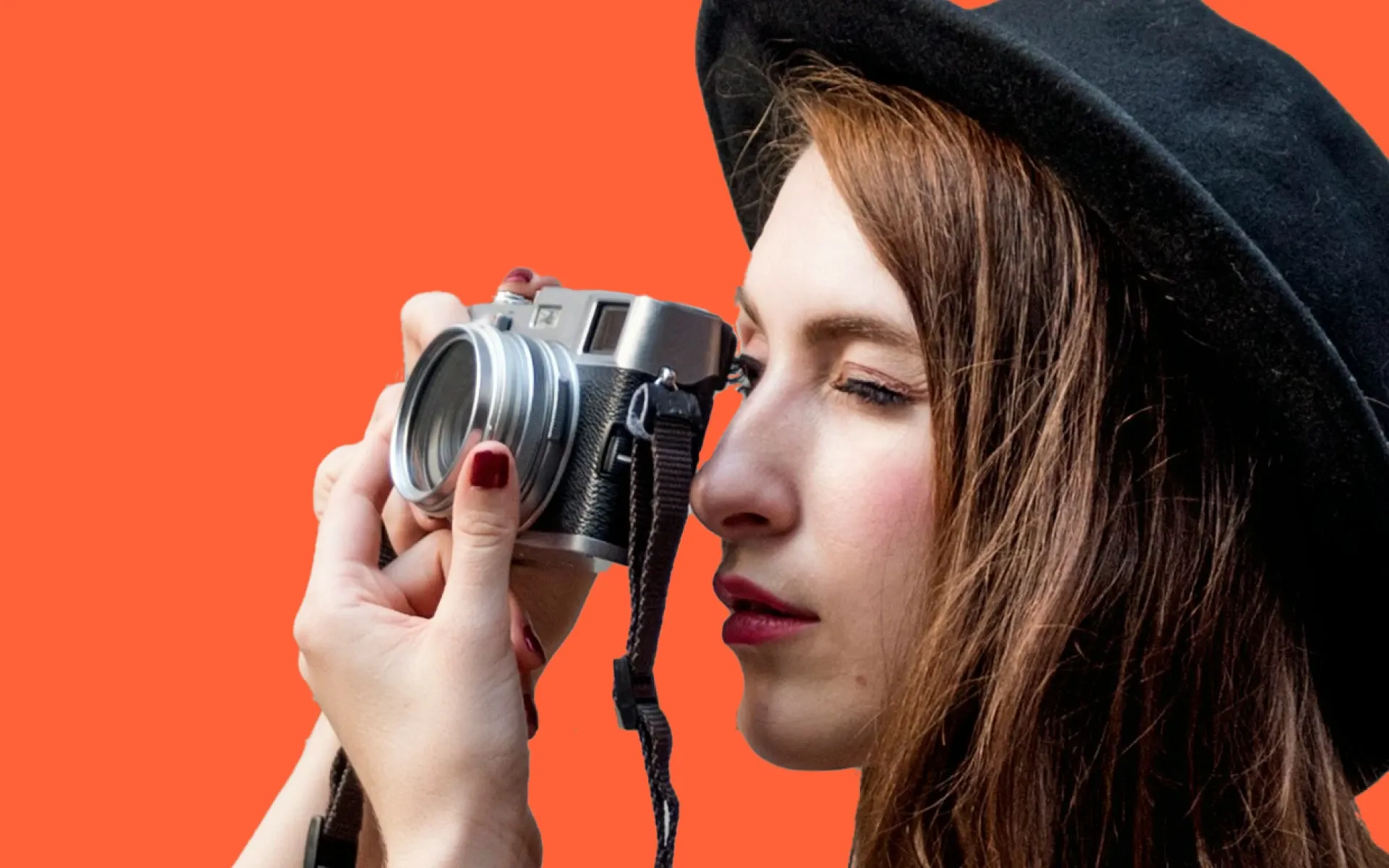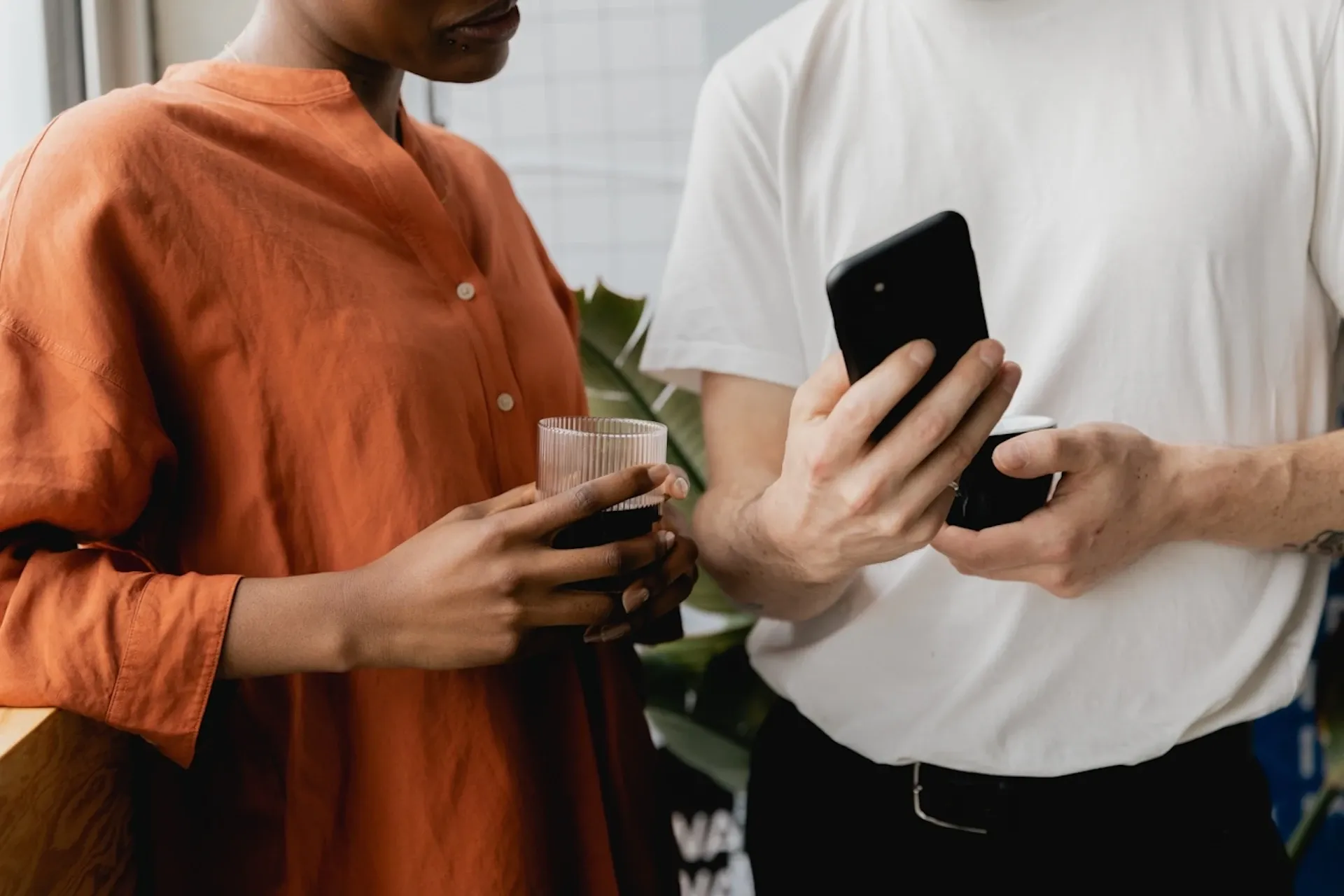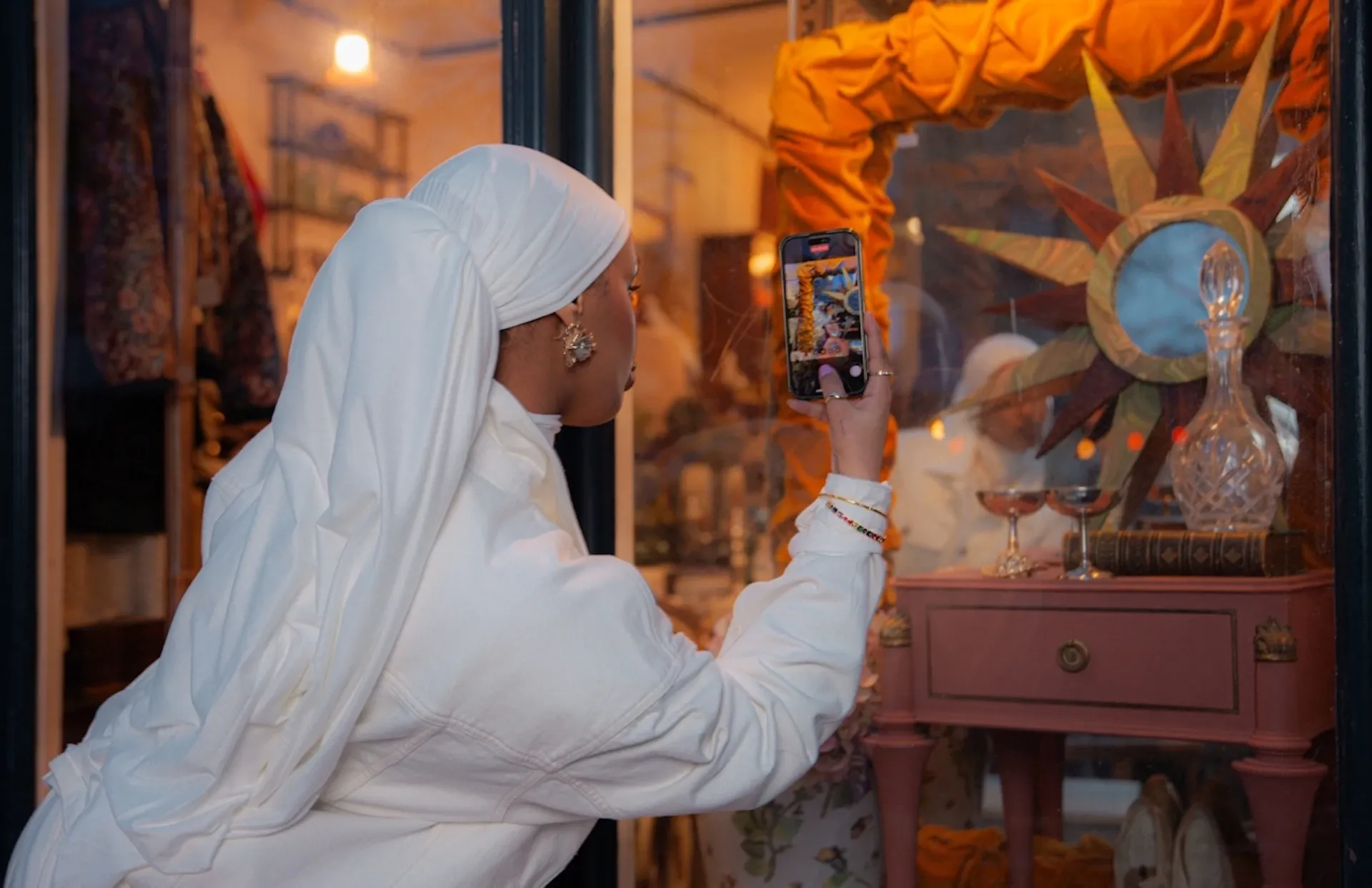The ultimate content monetization beginner’s guide
Content monetization policies vary between platforms — don’t get left behind. Our guide explains the different content monetization setups, tools, and more.

Today, we’ll cover:
- What is content monetization?
- Are there different ways to monetize content?
- How many followers and views do you need to monetize content?
- Content monetization for Facebook
- Content monetization for Instagram
- Content monetization for TikTok
- Content monetization for YouTube
- Content monetization for X/Twitter
- Content monetization for Snapchat
- Content monetization for Twitch
- Content monetization for Patreon
- Wrapping up: Should you monetize content?
What is content monetization?
Broadly, content monetization is the process through which your content generates income. Traditional content monetization comes from views and engagement — the higher the numbers, the higher the earnings.
Are there different ways to monetize content?
As social media platforms have evolved, so have content monetization policies and thresholds. Some platforms only grant content monetization to paid-up members, while others require specific follower counts or watched hours.
Content monetization can be passive, which means that once it’s set up, the earnings trickle in, rather than in one batch. Different platforms offer different rates, which is why you might see someone publish the same video on TikTok, YouTube, and Instagram.

If you’re serious about content creation and want to make it your full-time job, creating monetizable content is a crucial step.
How many followers and views do you need to monetize content?
The amount of followers and views required to monetize content depends on two factors: the platform you’re using, and the type of monetization you’re aiming for.
Let’s take Instagram, for example. Just 500 followers allows monetization with Stars, while Badges are only available when you reach 10,000 followers.
There’s no one-size-fits-all solution — it really depends. Some platforms have a formal content monetization application process, while others will just unlock their features once you hit the relevant milestones.
So, let’s run through the different monetization requirements and tools for the key social media platforms.

Content monetization for Facebook
Facebook’s one of the oldest, most successful social media platforms around. Naturally, it supports numerous content monetization tools. Let’s go through them now.
1. In-stream ads
To unlock pre-, mid-, and post-roll Facebook ads for your on-demand and live video content, you’ll need to receive an invite from Facebook. There’s currently no active application process.
If you’re invited, you’ll be able to collect advertising revenue share from the ads shown on your content. Since 2025, this now includes Reels and Stories.
2. Facebook Subscriptions
Facebook Subscriptions give fans a ton of exclusive content to dive into. Creators with either 10,000 followers or more than 250 return viewers can access Facebook Subscriptions, of which they’ll keep 100% of the earnings, minus any service fees or taxes.

3. Meta Brand Collabs Manager
Creators with more than 1,000 followers can use the Meta Brand Collabs Manager, which helps pair brands with creators. At the time of writing, fresh applications have been paused.
If you’re interested in collaborating with brands, you can still reach out via third-party platforms.
4. Facebook Stars
Facebook’s tipping tokens, Stars, let viewers show their appreciation. They can buy and send Stars for on-demand, live, Reels, photo, gaming, and text-based content.
Each Star is worth $0.01, which adds up if you have a dedicated fanbase. To access Stars, you’ll need at least 500 followers.
5. Facebook Performance Bonus program
The Facebook Performance Bonus is an invite-only perk, usually offered to viral or high-performing creators who’re already monetizing content.
The program provides extra payments based on engagement, and offers one-time payouts for curated content.
6. Facebook Level Up program
If you’re a Facebook gaming creator with more than 100 followers, the Level Up program is worth considering. Once you’re approved, you can access additional subscriptions, in-stream ads, and other monetization options.

7. Facebook Shops
Sell merch directly to fans with Meta’s Commerce Manager. There’s no minimum follower threshold here, but you’ll need to make sure that anything in your Facebook store mirrors your “other,” third-party storefront.
8. Affiliate links
Affiliate marketing is a process in which an online merchant or advertiser shares a tracking link with an external partner, also known as an affiliate. The affiliate shares the link with potential customers, and once an action is completed via the link, the affiliate receives a commission.
These links aren’t particularly high-value, but they’re perfect if you’re dipping your toe into monetization. If the affiliate link chimes with the content you’re creating, there’s no harm in trying.
It’s worth saying that Facebook monetization is going through a transitional period. The new Facebook Content Monetization Beta program, due to go live later in 2025, will combine in-stream ads, Reels, and the Performance Bonus Program.
Learn more about content monetization on Facebook below.
Content monetization for Instagram
Instagram is owned by Meta, Facebook’s parent company. As such, there are several content monetization routes on the platform. Let’s check them out.
1. Brand partnerships
Even micro-influencers with 1,000 followers can earn between $10 and $100 for a sponsored post. You can reach out to brands directly, or join the Instagram Creator Marketplace to keep all of your communication in-app.
2. Badges on Instagram Live
Similar to other platforms, Instagram offers tokens that viewers can send to their favorite creators. They’re called Badges, and are priced at $0.99, $1.99, and $4.99 increments.
Badges can be earned during Instagram Live streams, then exchanged for real money. Creators keep 100% of any revenue earned through Badges, minus any taxes or service fees. Badges require at least 10,000 followers.

3. Instagram Stars
Creators with 500 followers or more can activate Stars. Viewers can tip with Stars when watching their favorite Reels.
Stars can then be exchanged for gifts, which are sent to the creator. Each Star’s worth of gifts is worth $0.01, which can be cashed out for real money, like Badges.
4. Instagram Bonuses
Bonuses vary from country to country, offering creators the chance to complete paid, milestone-based challenges. If you’re new to the platform, you can apply for the Breakthrough Bonus, with which you can earn up to $5,000.
5. Instagram Shop
The requirements for Instagram Shop are the same as those we outlined for Facebook Shops, and can be set up directly in Meta’s Commerce Manager.
6. Affiliate links
Affiliate marketing sometimes ties into the brand partnerships we mentioned earlier, but also stands as a content monetization stream in its own right.

7. Instagram Subscriptions
Creators with more than 10,000 followers can roll out paywalled, monthly Instagram Subscriptions. These can be priced anywhere from $0.99 to $99.99, and offer followers everything from exclusive Reels to promo codes and subscriber-only badges.
Although the entry point for Instagram Subscriptions is high, the payoff is worth it. Creators receive 100% of subscription-based income, minus any taxes and service fees.
Unlike some of the other platforms featured in this list, Instagram doesn’t have a strict number after which all monetization is available.
As a rule of thumb, 1,000 Instagram followers is a solid place to start before considering serious content monetization. For a full deep-dive into Instagram monetization, read our full guide below.
Content monetization for TikTok
TikTok first gained traction in its native China. Now, it’s a global platform with plenty of solid monetization options. Let’s explore those now.
1. TikTok Creator Rewards Program
The TikTok Creator Rewards Program lets you monetize content that’s over one minute long, provided it’s not a Duet, Stitch, shot in Photo Mode, or part of an advertising/sponsorship campaign.
It’s no walk in the park, though. To unlock the program, you’ll need at least 10,000 followers and 100,000 video views over the past 30 days.
2. TikTok LIVE Gifts
During TikTok LIVE streams, viewers can buy and send virtual gifts to creators. These gifts are then converted into “Diamonds” based on the stream’s popularity. Diamonds can be exchanged for real-life currency.

3. TikTok Subscriptions
TikTok Subscriptions let creators offer fans exclusive badges, extra video content, private chatrooms, subscriber-only streams, and more.
To activate subscriptions, you’ll need 10,000 followers and at least 100,000 video views in the last 30 days. Excluding any service fees or taxes, all revenue is split 50/50 between you and TikTok.
4. TikTok Shop
TikTok Shop is a video-first, in-app storefront. There’s no minimum follower count, with the only requirement being standard ID checks. If you have a Marketing or Affiliate account, you’ll need at least 5,000 followers to access TikTok Shop.
5. TikTok Creator Marketplace
The TikTok Creator Marketplace lets brands connect with creators, offering both paid and reward-based campaigns. TikTok creators with more than 10,000 followers, at least 1,000 post views in the past month, and at least three published posts within said period are eligible.

6. TikTok Effect Creator Rewards
TikTok Effect House lets creators design, publish, and share their AR effects and filters.
With Effect Creator Rewards, your effects will generate income based on engagement. To qualify, you’ll need to publish a minimum of five effects, of which three must have been used in at least 1,000 videos.
7. Affiliate links
You can use affiliate links on TikTok in a similar fashion to the other platforms on this list. They often don’t require a minimum follower count, and can be a good entry point for smaller creators.
Want to know more about TikTok content monetization? Hit the button below.
Content monetization for YouTube
YouTube is arguably the platform folks associate with content monetization. The big red button’s got a lot to live up to — let’s dig into its monetization avenues.
1. Ad revenue sharing
YouTube is the world’s second-largest search engine, which makes ad revenue sharing a competitive — but potentially lucrative — process. To access this, you’ll need to join the YouTube Partner Program (YPP).
While the YPP’s subscriber threshold is 500, you’ll need at least 1,000 followers to make money from advertising. This covers content on your YouTube Watch Page, YouTube Shorts, YouTube Live streams, and embedded videos.
YouTube uses Google AdSense to monetize ads before, during, and after your content. Once you’re signed up to the YPP, you’ll earn money every time an ad is displayed on one of your videos. YouTube keeps 45% of the earnings, leaving you with 55%.

2. YouTube Commerce Product
The YouTube Commerce Product compiles several fan-funding monetization methods, for all of which you’ll keep 70% of the revenue. They’re all available on YouTube Live.
- Super Chat: This chat function lets YouTube Live viewers donate up to $500 per day, in return for prime comment placement.
- Super Stickers: These stickers are priced between $0.99 and $50. Once purchased, they’re pinned to the top of the live chat.
- Super Thanks: Like Super Chat, Super Thanks are capped at $500 per day. Once sent, Super Thanks display featured, animated comments in the live chat.
3. YouTube Premium
If viewers with a YouTube Premium subscription watch your content, you’ll receive a fraction of that Premium money. This applies to all content on your channel, provided it meets the Community Guidelines.
4. Channel membership
Channel membership lets viewers join an exclusive part of your channel for a monthly fee, with paywalled content and perks organized into tiers.
Channel memberships run from $0.99 to $100 per month, and like Commerce Product, leave you with 70% of the revenue.

5. YouTube Shopping
YouTube Shopping lets you link to your products during your videos and YouTube Shorts.
Your products can also be accessed through your channel’s official store, a product shelf below your content, a shopping button within your content, or as a pinned product during live streams.
6. Brand partnerships
You can arrange partnerships and sponsorships outside of YouTube’s walls, or you can try the platform’s in-house solution, YouTube BrandConnect.
7. Affiliate links
Like the other platforms we’ve mentioned in this list, you can use affiliate links to monetize content on YouTube.
Dig into more YouTube content monetization details below.
Content monetization for X/Twitter
X/Twitter monetization only became a “thing” in 2023, and direct options are limited to users with an X Premium subscription or Verified Organization account.
1. X/Twitter Subscriptions
In exchange for a monthly fee, X/Twitter Subscriptions offer followers exclusive bonus content, badges, subscriber-only replies, and more. This option’s perfect for creators with an established following.
X/Twitter lets you keep up to 97% of revenue until you hit a lifetime monetization total of $50,000. Once you’ve reached that, revenue share drops to a maximum of 90%. Either way, it’s a sizable slice of the pie.
2. Ads Revenue Sharing
X Ads Revenue Sharing isn’t based on regular impressions, as is the case for other platforms’ models. Rather, X/Twitter’s version is based on organic impressions from verified accounts within your content’s replies section. This means that even if your content goes viral, you’ll only receive ad revenue on impressions from paid users’ impressions.

3. Affiliate links
Moving away from platform-specific monetization methods, there’s always affiliate marketing. You can use affiliate links on X/Twitter in a similar fashion to the other platforms on this list.
4. Sponsored content
While X/Twitter doesn’t have a dedicated brand partnership section, you can arrange third-party sponsorship/partnership deals outside of the platform.
X/Twitter content monetization isn’t as varied as other platforms’ models, but that doesn’t mean it’s not got potential. Learn more below.
Content monetization for Snapchat
Snapchat might not be the first social media platform you associate with monetization, but there’s a healthy bunch of options. Let’s run through them now.
1. Ad revenue sharing
The Snapchat Monetization Program activates content monetization through ad revenue sharing. Eligible creators can run ads on their Spotlight and Story content, for which they’ll receive a portion of the revenue.
This doesn’t come easy, though. The Snapchat Monetization Program has a high barrier to entry. 50,000 followers is the bare minimum, plus a few other high-ranking criteria.

2. Brand Partnerships
Activating the “Brand Partnerships” option in your Profile Settings shares your content and profile with third-party brands. This can result in content monetization opportunities both on and off Snapchat.
Snapchat Brand Partnerships are only available to verified public figures, celebrities, and popular creators — known on the platform as “Snap Stars.”
3. Paid Partnerships
Snapchat’s official Paid Partnerships are available to both Snap Stars and regular Snapchatters. Toggling the “Paid Partnership” button lets viewers know that your content is part of a brand team-up.
Click below for our complete rundown on Snapchat content monetization.
Content monetization for Twitch
Twitch’s community-focused model makes monetization a little more personal than some of the other platforms on this list. Here are the different content monetization tools available on Twitch.
1. Twitch Affiliate
Twitch Affiliate status opens up a whole host of monetization options. To become an Affiliate, you’ll need at least 50 followers, plus the below across the last 30 days:
- At least four hours broadcast
- At least four days on which you’ve broadcast
- An average of three or more viewers across your streamed days

2. Twitch Subscriptions
Once you’re an Affiliate, you can activate Twitch Subscriptions. These are priced at $7.99, $9.99, and $24.99 tiers, offering subscribers everything from exclusive chat rooms and emoticons to merch discounts and giveaways.
As a Twitch Affiliate, you’ll keep 50% of all subscription revenue.
3. Twitch Bits
Bits are Twitch’s own currency — viewers can buy 100 Bits for $1.40. Whenever someone “cheers” during a Twitch live stream, it costs them one Bit.
Twitch takes $0.40 of every 100 Bits purchased, leaving the value at roughly $0.01 per Bit. It might not sound like much, but if you have a dedicated fanbase and stream often, Bits can make a real difference.
4. Ad revenue sharing
Like several of the other platforms we’ve covered, Twitch supports ads. As long as you run three minutes’ worth of ads per hour, you’ll receive 55% of the ad revenue. Ads are available for Twitch Affiliates and Partners.

5. Brand partnerships
You can arrange partnerships and sponsorships outside of Twitch’s platform.
6. Affiliate links
You can use affiliate links on Twitch like you’d use them within other platforms included in this list.
If you’d like to learn more about Twitch content monetization, click below.
Content monetization for Patreon
Patreon is different from the other examples on this list, as it’s primarily a monetization platform. If you have an established fan base, you can use Patreon to provide custom-tiered, flexible subscriber content on your own terms.
Interested? Read more about Patreon here.
Wrapping up: Should you monetize content?
Content monetization isn’t easy, especially if you’re spread across multiple platforms. It takes time, energy, and real dedication — it doesn’t happen overnight.
Once established, though, content monetization can help you earn revenue both actively and passively. If you want to learn more about monetizing your soundtracked content safely with Epidemic Sound, click here.

Our music catalog is high-quality, affordable, and safe. An Epidemic Sound subscription removes the headache of licensing, freeing you up to do what you do best.
You can enjoy the safety of our license hand-in-hand with our massive catalog of 50,000 tracks, covering just about every genre you can think of. You’ll also gain unlimited access to our advanced search functions — finding the right sound’s never been easier.
It’s better than royalty-free. It’s worry-free. Get started with Epidemic Sound below.

Related posts:

